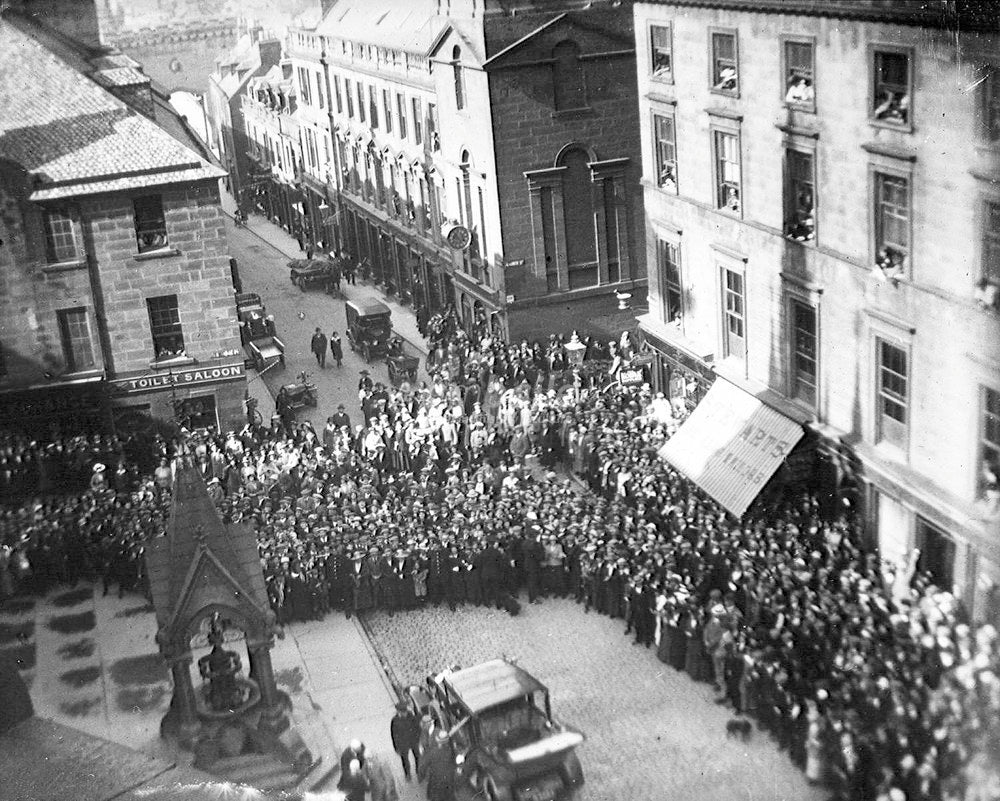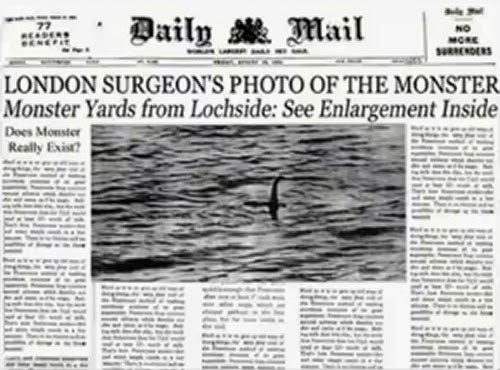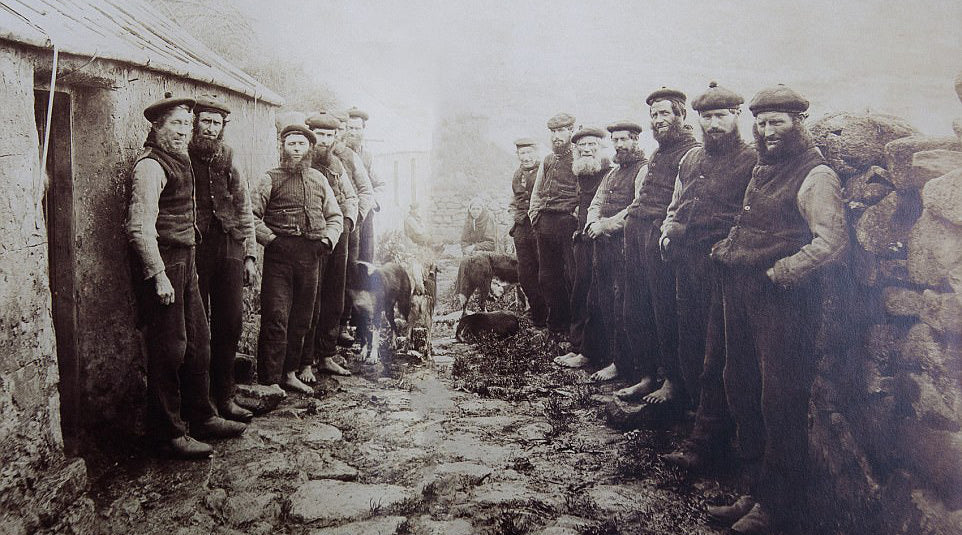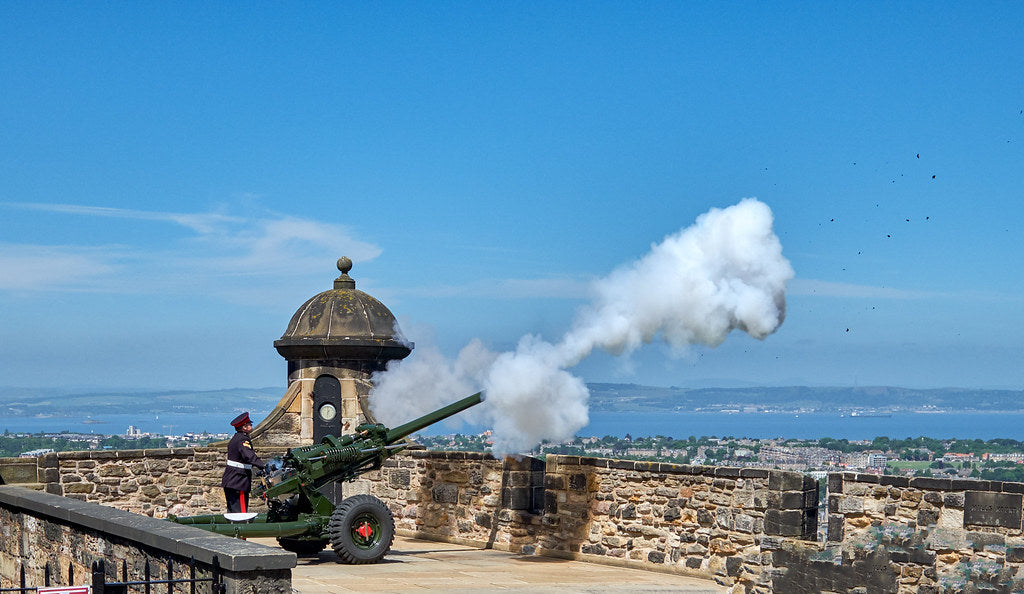Congratulations you have finished the treasure hunt! Collect your souvenir here.
Stories & Facts
Clue 1
Inverness, the UKs most northerly city hosted the only meeting of the cabinet ever to have been held outside London in 1921.
An emergency meeting of British Cabinet Ministers was convened at Inverness Town House on September 7 as the future of British-Irish relations hung in the balance.
Prime Minister, David Lloyd George, was on holiday at Gairloch when he learned that Ireland had rejected the King and Empire. Eamon de Valera, the leader of Sinn Fein, had announced an "irrevocable rejection" of the UK Government's peace offer, implying that only full independence for Ireland would satisfy Sinn Fein's demands.
Rather than travel back to London, as his deputy was at Beaufort and King George V was on a grouse shooting holiday at Moy, the Prime Minister decided to call a meeting in Inverness – the first time one had ever been held outside Downing Street or Chequers.
Below - Crowds gathering outside Inverness Town Hall for the Cabinet meeting.

Clue 2
Loch Ness, how it all started?
The first recorded account of Nessie the Loch Ness Monster is of an eyeball to eyeball confrontation with the Irish saint, St. Columba in the 6th century. St. Columba, so the story goes, ordered one of his monks to swim across the loch and fetch a boat. Halfway across the monster appeared and rushed at the swimmer, roaring in a most frightening way! Columba cried out to the monster,” Go no further, nor touch the man! Go back!”. The monster is said to have fled!
The legend really took off in 1933 when the first photograph was taken of the monster, or what is said to be the monster. It showed something with a long neck arched over a thick body. This photograph, taken by a London surgeon caused a sensation when first published in the Daily Mail.
Below - The first photograph of Nessie in the Daily Mail.

Clue 3
St Kilda, the most remote part of the British Isles, lying 41 miles west of Outer Hebrides in the Atlantic was inhabited for 4,000 years until 1930.
Isolated and battered by a hostile climate, the inhabitants survived largely by scaling sheer cliff faces to catch the plentiful gannets, fulmars and puffins, and farmed meagre crops.
However from the mid-19th century the hardy residents began to lose their self-sufficiency, relying more on imports of food, fuel and building materials, and on revenue from tourists. As contact with the outside world increased, so too did the islanders' dissatisfaction with the realities of their life.
A series of events led to their eventual evacuation to the mainland at 8am on 29 August, 1930. In all, 36 men, women and children made the 12-hour crossing, a few went to live and work on the Forestry Commission's 7,000-acre Fiunary Forest. Which for some was also the first time they had seen a tree.
Below - Men of St Kilda, taken in 1927. The men of the village would meet every morning in the village street to decide on the work to be done that day.

Clue 4
Callanish Stones and the Old Woman of the Moors.
Dating form 3000BC it is generally believed that the Callanish Stone Circle functioned as an astronomical observatory, tracking a lunar rise that only occurs once every 18.5 years.
The horizon is comprised of hills and mountains, the most dominant being the Clisham. These form the shape of a reclining woman, named ‘Cailleach na Mointeach’ (meaning ‘old woman of the moors’). Every 18 and a half years, the moon at its south extreme will rise and glide along her body, before momentarily illuminating Glen Langadale.
Below - The Old Woman of the Moors, head, body, knees, feet.

Clue 5
Isle of Staffa, the myth linking the Fingal's Cave and Giants causeway (Northern Island).
These two locations share the same hexagonal rock formations, here is the reason why...
Once upon a time, there was a mythological Irish giant called Finn McCool who got himself into a spot of trouble with a high-tempered Scottish giant called Benandonner who had made a claim for Finn’s island of Ireland.
Enraged at Bennandonnar’s claim to Ireland, the giant Finn McCool starts angrily throwing boulders into the sea off the Antrim coastline in Northern Ireland. Inspired by the way they fell into the water, Finn decided to use his boulders to make a bridge or a causeway – a Giant’s Causeway – all the way to Scotland's Isla of Staffa. Using his causeway to Scotland, he could challenge his rival to a proper duel over the fate of Ireland.
In a mythical world where size dictates winners and losers, Finn realises he has underestimated his enemy – Benandonner is giant even for a giant! Brute force won’t work on him – so Finn quickly returns to Ireland via his Giant Causeway and decides the best way to beat Benandonner is to con him.
Leaving the Giant’s Causeway for Benandonner to find, Finn McCool’s wife disguises him as a baby. When his rival arrives, he finds Finn’s wife Sadhbh (pronounced “Siive”) tending her enormous baby giant. Realising that if Finn’s child was this big, Finn himself must be huge!
The Scottish giant Benandonnar hurries away, retreating back to Scotland with his tail between his legs. As he hurries home, he frantically tears away bits of the causeway, severing all ties between Scotland and Ireland to prevent Fionn McCool following him as he retreats to the Fingal’s Cave on the Isla of Staffa.
This leaves giant Finn McCool to regain undisputed control over Ireland once more. Thus, the myth of the Giant’s Causeway was born.
Below - Similar rock formations at Fingal's Cave & Giants Causeway.

Clue 6
Stirling Castle, The Birdman and the first record of attempted flight.
In September 1507 John Damian announced he would use a pair of wings made of birds' feathers to fly from Stirling Castle to France. He duly launched himself from the castle walls, only to crash immediately afterwards into a dunghill 70ft below, where he broke his leg.
In what might be regarded as the world's first aviation accident investigation, Damian later reported to the King that the failure had been caused by the accidental incorporation of some hen feathers into the wings: the problem being that hens could not fly. That said Damian appears never to have tried to repeat his feat.
Below - An artistic impression of the first flight attempt.

Clue 7
3 Forth Bridges, the origins of the famous idiom 'like painting the Forth Bridge'
The saying 'like painting the Forth Bridge' used to describe a job or time-consuming improvement process that it never truly ends originates because the bridge use to take so long to paint that once it was finished at one end it would need to be started again at the other end.
However due to advances in paint technology this ceased in 2011 when it was coated with in a layer of paint which will last 25 years.
Below - Painting the Forth Bridge in the past.

Clue 8
Edinburgh Castle is the most besieged place in Great Britain.
Edinburgh Castle has faced down hostile forces an incredible 23 times, making it the most embattled fortress in the UK. Notable instances include the Longshanks Siege of 1296, when Edward I plundered the castle and shipped all its treasures to London. There’s also the Lang Siege, which resisted government forces from 1571-73, after the garrison occupying the castle declared their support for Mary, Queen of Scots. The last siege was during the 1745 Jacobite Rising, when Bonny Prince Charlie tried – and failed – to take the fortress.
Below - The noon day gun fired daily at Edinburgh Castle (except on Sundays, Good Friday and Christmas Day). This dates from 1861 when it was used so ships in the Firth of Forth could set their maritime clocks.


